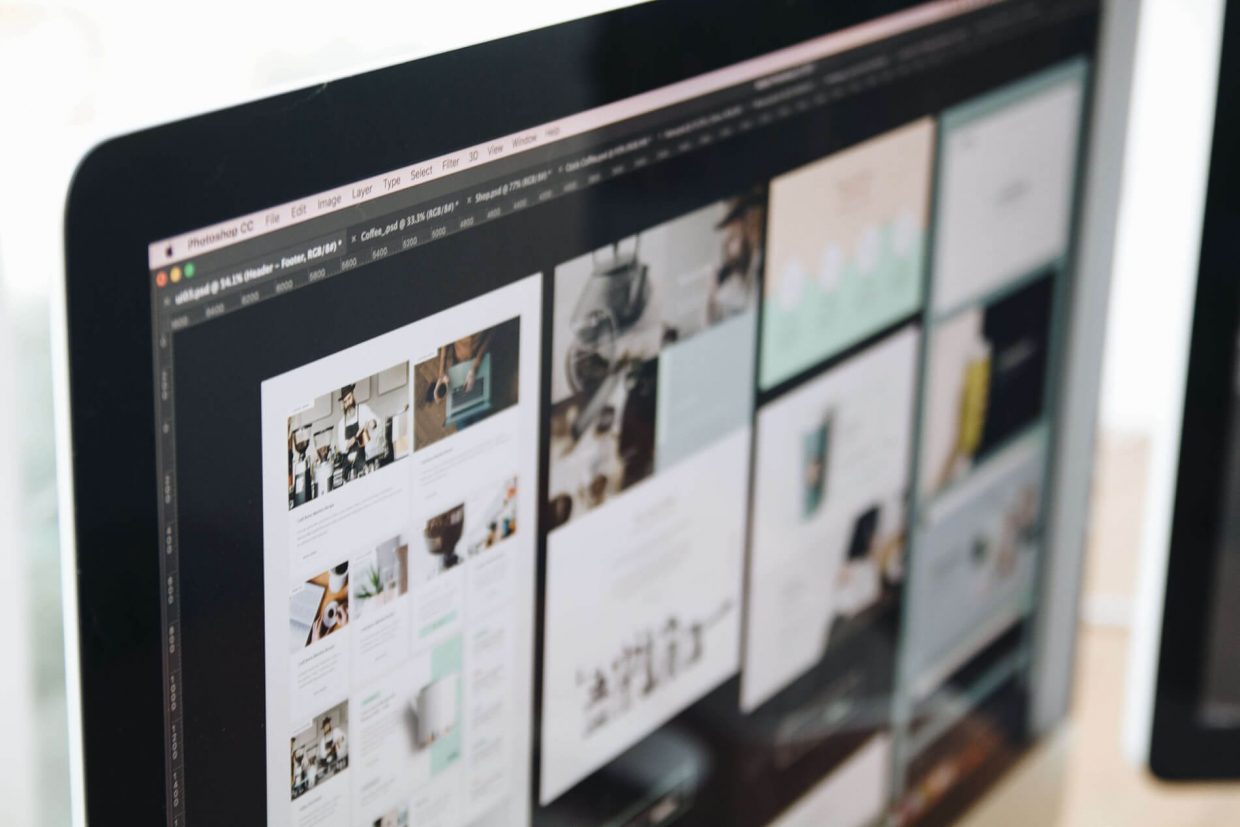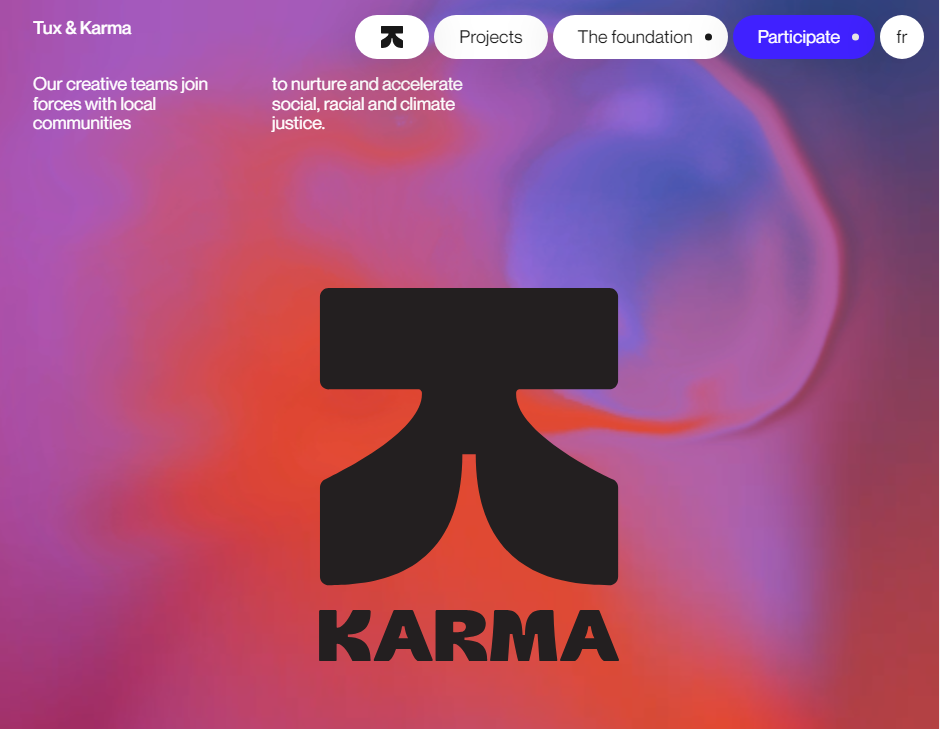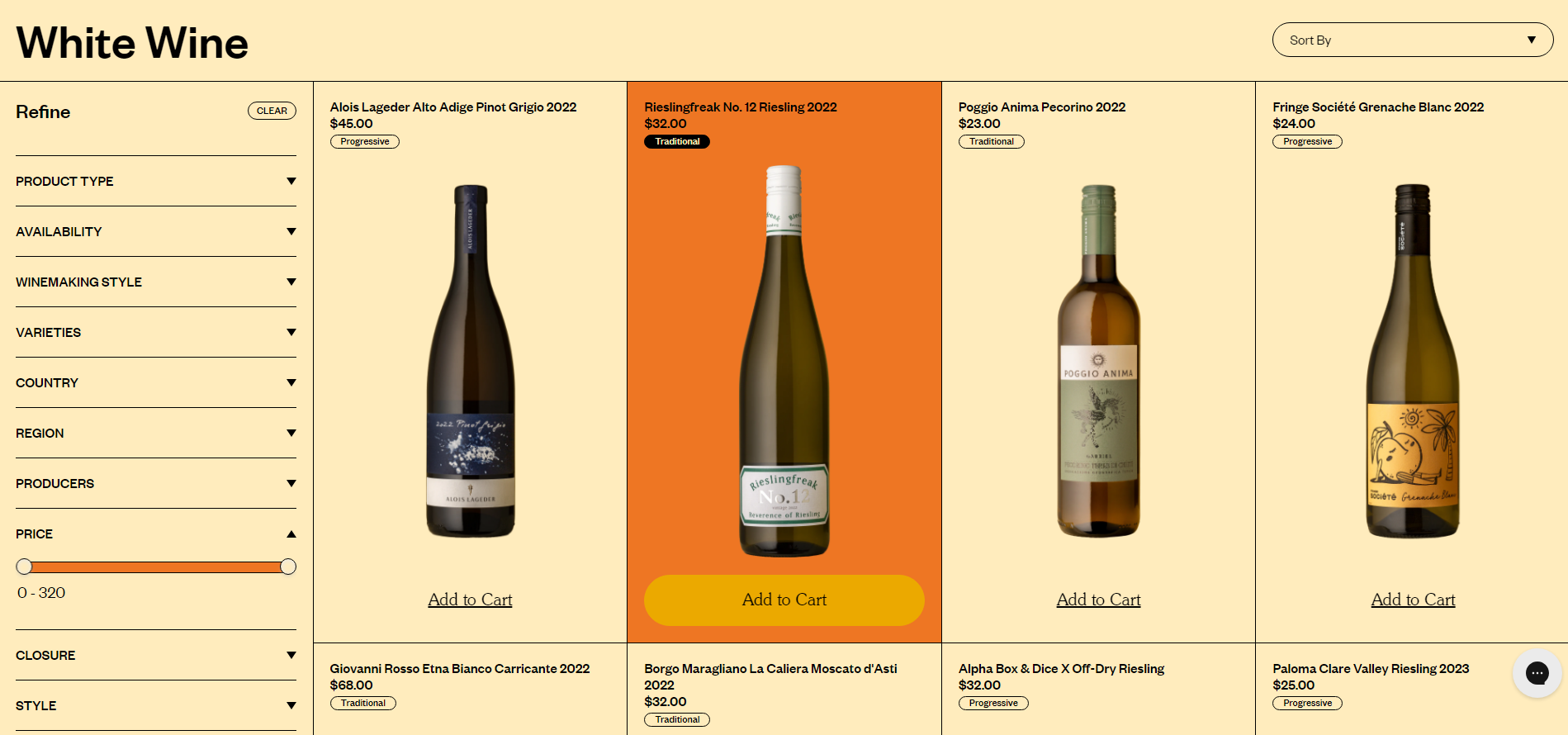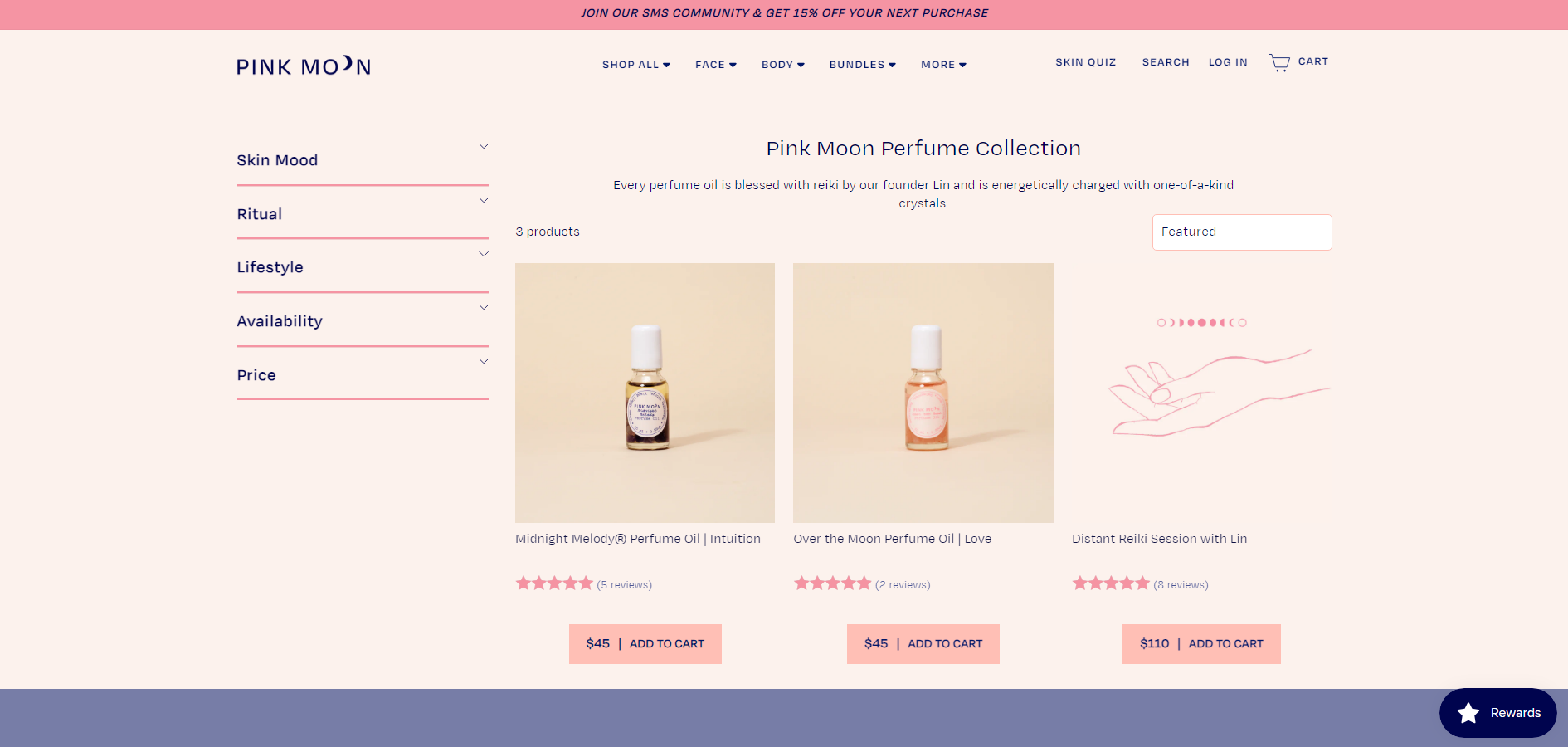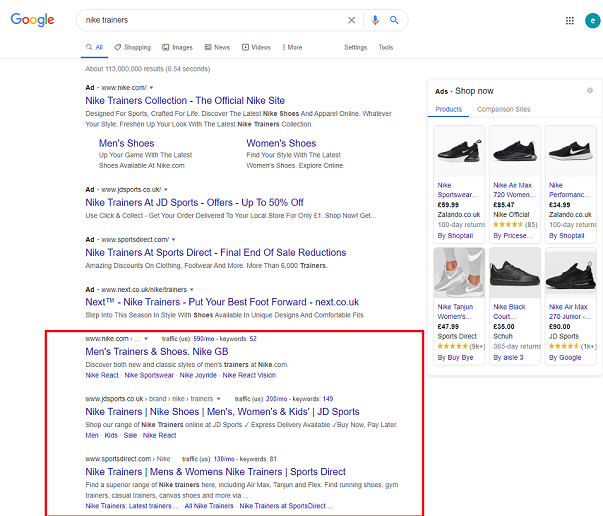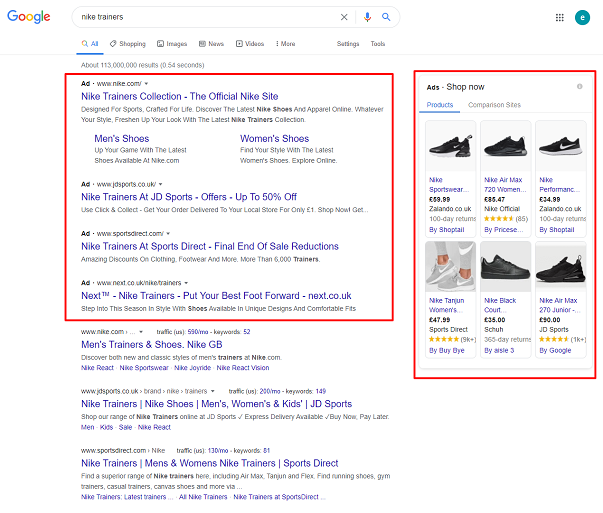Website Design Trends 2024
If you’re looking to redesign your website, or even start a brand new website, it shouldn’t look like it was built in 2016. A contemporary design builds customer trust, and the features you employ can say a lot about your brand.
Whimsy, simplicity, and futuristic innovation can all be communicated through the design ideas and features that will be used on thousands of new websites this year.
Best Website Design Ideas in 2024
Designing websites is what we do, so we know when something good comes around. These ideas will make your site stand out and show off your brand.
How do I know if I need a new website?
Colourful Gradients
Rather than minimalist linear gradients, 2024 is about complex gradients that blend 3 or more colours. This creates depth and dynamic interest across the page and is perfect for brands where creativity is key.
A gradient like this can give sites a sense of space and light, even in dark mode, as this intergalactic example from Cosmos shows.
These creative colour gradients can also give website designs a psychedelic effect when combined with mouse interactions, as in is this award-winning design.
On this site, the user’s mouse sends liquid ripples through the header’s gradient. When highlighting text, the highlight itself is animated, fading from one colour to the next.
The downside of all this animation is, as stated above, the slow page speed, which indexes at 5.6s on Lighthouse. This could be caused by an array of complexities across the site, but we suspect the header is playing a role.
Dark Mode
With more and more apps adding Dark Mode in recent years, websites are following suit. In the early days of computing, we wanted to mimic the blank white page, or at least follow print with dark text on a lighter background.
Today, designers are more aware of blue light’s effects on sleep, computer use causing eye strain and conditions such as migraines and headaches. Dark mode is much more comfortable to read and provides a contemporary feel to any website design.
Dark-mode website design doesn’t just mean black backgrounds with white text. It can mean any colour palette where the text colour is lighter and brighter than the background. For example, this dark red palette from data science company Ventriloc. 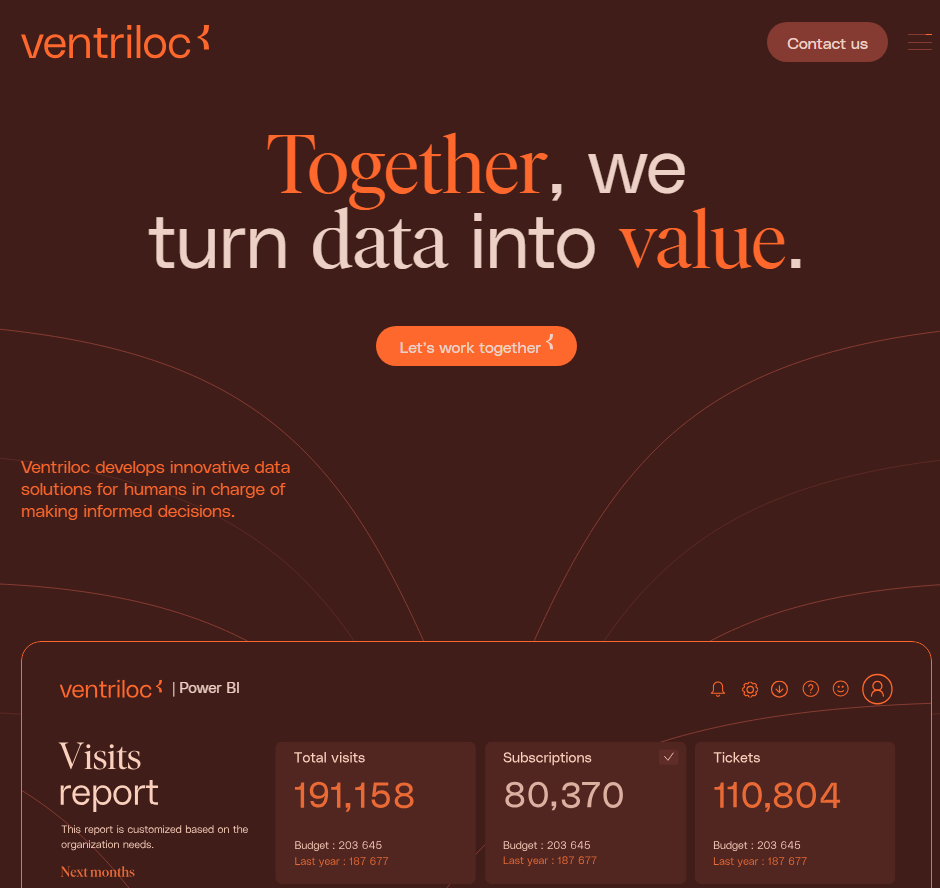
Grids, Outlines and Bento
Many new website designs are finding new aesthetics for their user interface. Instead of full-width sections, a grid helps designers show a lot of information without creating clutter.
Types of Grid Design:
- Informational: detailing features, USPs in neat, discrete sections
- Navigational: providing quick access to tools and service pages
- Aesthetic: communicating brand personality as organised, technical, and modern.
There are two different styles for these grids, however, with quite different effects.
Thin lines, flat colours and sharp edges
Some grids use thin, high-contrast borders to divide pages and menus. They often employ a low-impact colour palette and clean typography. This kind of design projects simplicity and a down-to-earth attitude, and is often used by companies working on sustainability and ethical business.
Curved Tiles on a Contrasting Background
The other side of the bento-grid coin is the designs that favour rounded tiles and complex colour palettes. They are much punchier and common in SaaS interfaces such as Pinterest and Spotify.
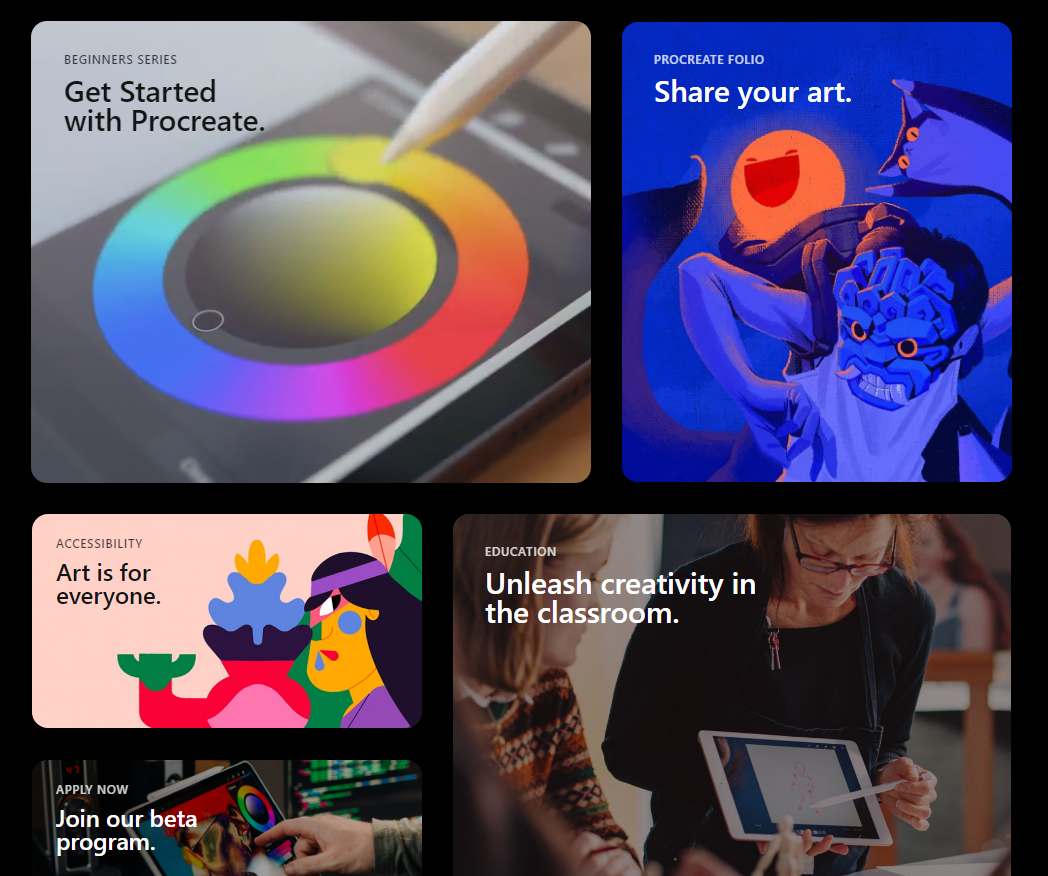
From Procreate.com
They are heavily used in Apple’s UX layouts and promotions, so wherever they appear they remind users of iPhones, app menus and the high-technology, futuristic atmosphere of the 2010s.
Amplify this futuristic appearance by adding shadows, gradients and dark mode designs.
If you’re interested in using a grid in your website design, make sure it matches your brand identity. Are you a back-to-basics, sustainable, salt-of-the-Earth company or a high-flying, hi-tech, streamlined business?
Custom Cursors
Custom cursors add novelty and whimsy to your digital branding. A cool new pizza restaurant could use a pizza slice cursor, for example. A dog-walking service could change the cursor into a chew toy.
This restaurant website design uses a peanut, chased by an elephant.
If it gels with your brand identity, this animation type can engage your ideal customers, turning your site into a game or a novelty. They spend more time on the site, looking for more fun features, and they develop an affinity for your brand.
They might even share your site just so their friends can see your cool cursor animation. All this makes them more likely to choose you when they’re ready to purchase.
A Hero’s Welcome: The Return of Static Hero Banners.
It’s goodbye to slideshow headers on homepages. These are fun when done well, but they can quickly grow too large, particularly with sub-optimal images. This slows the homepage down, with a negative effect on the whole design.
Slower site speeds mean potential customers navigate away, and search engines are less likely to rank the site on page 1.
Instead, 2024 will see a return to static hero banners. These high-definition banners fill the page right up to the fold. They’re responsive, having a great impact on desktop and mobile alike.
Hero Banners invite people to interact immediately and distil your branding into a focused message. This website design trend can do a lot for brands that prefer a focused user experience.
AI Design Features
AI has been the buzzword of digital circles for over a year now, and we are still seeing more use cases and innovations surfacing. While the basic Large Language Model content is nothing to write home about, the more advanced uses have us thinking.
Layout Generation
With machine learning, there are models like Hostinger that can create website layouts and templates, based on what most websites have already. It might not create anything ground-breaking, but it could give designers more time to focus on customisation and finer points.
Visual search
Using computer vision to recognise and identify certain objects, visual search functions have helped users identify plants, artists and landmarks, learning about the world through their phone camera.
In 2024, visual search will support eCommerce platforms by helping users find similar items for sale online. No more prying for where your friend got their trainers…
Dynamic Content Personalisation
By understanding how users interact with a site, AI can highlight content that may be most interesting to them. Just like Spotify’s playlist creation and recommendations, your website could create personalised wish-list suggestions, related products and blog recommendations.
Chat-bots
With AI content generators, customer service bots are likely to get an upgrade in 2024. They’ll be more able to write natural language, respond to technical commands and even walk users through payment processes. As long as your bot is equipped with the right API for your payment system, your website users will find making payments more accessible and satisfying.
Generative “Art”
AI has been making marketing imagery much quicker and cheaper for brands, and it looks like this will continue. AI art can mimic art media such as oil paints and charcoals, and styles such as cubism and pointillism.
We predict this will lead to a rise in complex imagery for some brands (where appropriate), as access to artistic images will no longer require artist and illustrator commissions.
**AI Pitfalls**
However, as fast and affordable as AI is making imagery, it is an imperfect solution. AI and generative art programmes frequently offer surreal additions to images, such as disembodied limbs or exaggerated facial expressions.
It also can never mimic true creativity. It is generative, not imaginative, and can only draw on what exists already.
For original art and thinking, brands will need to invest in human artists.
Kinetic Typography
Kinetic typography or dynamic typography is a feature that adds animation to text to create a whimsical and expressive home page feature. This is great as it can work as a loading animation, as in this zine from CashApp. It can also be triggered as a scroll animation, encouraging users to read to the end.
Accessible Website Design
In recent years, website designers have been paying more attention to accessibility for all. In part, this means enabling users that have disabilities, conditions or impairments which cause a barrier to internet use. Many people use assistive technology such as screen readers, magnifying software, closed captioning and eye trackers.
Accessible design takes proper coding to enable keyboard navigation, translation to audio or braille, or other enabling technologies. Make sure to include:
- Breadcrumbs to allow users to jump back up the page hierarchy
- Alt Text that describes the image accurately
- High colour contrast (above 4.5:1) to support users with low vision, colour blindness or migraine
- Descriptive link anchor text, not just “click here”.
- Semantic HTML such as heading, navigation and button tags to help assistive tech replicate the structure.
- ARIA (Accessible Rich Internet Applications) for elements that don’t have semantic HTML tags
One great example of an e-commerce website that is beautiful and accessible is Pink Moon. This site has almost no contrast errors, it’s structured logically and uses semantic HTML and ARIA tags throughout.
Build it Well with eSterling
“As always, it’s contextual: You can look up some beautiful modern design techniques, but when you actually describe what they are, it’s similar to what we’ve always been doing, with a new twist. The way you use these design concepts is what makes a website look modern.”
Joel Birkett, Designer at eSterling Ltd.
There are fluctuations in web design trends, and the key is to understand which will stand the test of time. Is AI another bubble? Will custom cursors drive conversions? We’re willing to experiment with you. A lot of what makes today’s websites look brand new is similar to what’s gone before; the big impact is thanks to quality design.
SEO vs PPC: Which is Better for My Business in 2024?
When putting together your digital marketing budget, one key decision is whether to invest in PPC (pay-per-click) ads, SEO (search engine optimisation) or both. Comparing SEO vs PPC concerning your business needs can give a clear picture of what will and won’t create the desired results.
Ideally, the most effective strategy is to invest in a combined PPC and SEO campaign. The two work well together to help you dominate search results in the long term, gaining customers from your competition. However, the reality of marketing budgets may limit your strategy to just one of the two.
This guide will define SEO vs PPC and give you the pros and cons to help you decide which will best fit your marketing goals.
What is SEO?
Search engine optimisation (SEO) is an ongoing process of amending your website and pages to communicate with search engines more clearly than your competitors. This process helps your website and pages appear in the top organic search results for relevant queries.
Organic rankings are search results that can’t be changed by paid advertising.
Search engines rank organic search results according to their relevance to the search term. Rather than paid advertising, SEO puts your brand at the top of the search results more organically: with mobile and load-time-friendly sites that showcase their products and services to both Google bots (which crawl your website) and users. Ensuring your website is user-friendly with useful information and few technical errors is a key requirement for a well-optimised website.
On-page SEO
One piece of the SEO puzzle is on-page SEO, which focuses on the elements shown on the front end of the website. There are many factors to on-page SEO. With the recent helpful information update, rolling out on-page SEO is more important than ever.
These on-page factors are where keywords come into play, and we can place keywords strategically to give search engine crawlers the clearest picture of what the page is about. These include:
- Content: High-quality, original and helpful content, always gains organic keywords, so the keywords gained must be relevant to your ideal customers.
- Headings: Breaking up content with headers makes it easy to scan and understand, helping people stay on your page longer. This helps at the consideration stage of the consumer funnel.
- Meta tags and descriptions: These appear in SERPs to give more information about the page, but they also tell search engine crawlers how to index your page.
- Images and Alt Text: Ensure your images are high quality, in the right format and named with keywords.
- Site structure: Pages should fit together in a logical, easily navigated way, for both users and search algorithms.
- Internal Linking: Including links between key parts of your website helps user navigation and search.
Getting the balance between user-friendliness and search optimisation is the key to high-ranking pages. Google’s Helpful Content Update(August 18th 2022) has changed the way SEO works when it comes to content. You can’t simply rewrite other people’s articles, or use AI extensively because Google won’t rank it. For great on-page SEO, a specific target audience can help create content that works to bring in quality traffic, using the keywords your audience uses and focusing on the problems they want to solve.
Off-page SEO
This is the secret sauce of SEO – focussed on building your website’s authority and credibility beyond content and site structure. This is how a search engine determines whether your website is worth ranking highly for keywords where there is high competition.
Off-page elements include:
- Backlinks and referring domains: quality links from reputable websites show that your website is a valuable source of information.
- Content marketing and social media engagement: sharing your content on a range of platforms encourages others to link to your website and builds up your rankings indirectly.
While there are fewer parts in off-page SEO, this key phase is just as challenging and requires a professional understanding of industry publications, audience management and social media.
In this way, a good SEO strategy provides a firm foundation for marketing, building your brand reputation as well as your search rankings. This makes SEO a powerful marketing technique for long-term results.
Pros of SEO
Low Cost: SEO is generally a lot more cost-effective than other forms of digital marketing, in particular PPC and Google Ads. You don’t pay for people to click on links to your website when you rank organically. SEO provides big opportunities for a great ROI in the long term.
Scalable: Once you have gained first-page rankings for high-volume keywords, you can build on this success and look at other areas to target. Good performance in SEO provides a great foundation for further digital marketing strategies provided you have the right strategy.
Higher Click-Through Ratio: Generally, users will be more likely to click on organic results than paid results, which many people ignore.
Branding: Aside from more traffic, high search rankings give your business and brand more visibility online. Many users trust organic results more than ads, and you can quickly build a reputation as a leading provider of a product or service if you rank highly for several keywords. The quality of the website, content and backlinks that are required for high search rankings have knock-on effects on your overall brand reputation. Your site appearing first can influence your perceived credibility with an audience looking for your product service.
Sustainability: Once you have achieved high rankings and have an ongoing SEO strategy in place, your competitors can’t simply outbid you to appear higher up. They will need to invest a lot of time in developing their site to knock you off the top spot.
Find out more about our strategies for SEO or contact us to talk it through.
Cons of SEO
Long Term:Results from SEO can sometimes take 3-6 months to generate results. If you only have a short window to see returns from your marketing, SEO may not be the best option. However, once your website has gained a significant ranking for high-volume key terms, this is fairly easy to maintain, bringing traffic to your site for the foreseeable future.
Not always viable: For the majority of businesses, SEO is an invaluable tool in their marketing arsenal. However, a small number of companies may not see the same benefits; their industry is too competitive in search or their product/services just don’t get enough search volume.
What is PPC?
Pay-per-click (PPC) is an advertising model where your website pages are displayed at the top of search results, marked as ‘sponsored’ or ‘advertising’. Google displays your ads with a link to
your website, and you only pay when a user clicks through to your site. This is typically associated with search engine advertising like Google Ads or Google Shopping.
A Strategic Approach for Google Ads
When creating a Google Ads campaign, we start with keyword research and organise the terms you want to target into the ad groups that will sit in your campaign. Once the campaign is live, you can manage this with a daily budget and set a cost-per-click limit, which stops the cost from spiralling. Your account will start spending money once a user searches and clicks on your ad.
We recommend starting at a lower budget for the first month or so, as your campaign will be in “learning mode” for the first six weeks. This means that Google is learning about the users searching for your ads, feeding into an algorithm to help Google determine if the user is in the awareness or consideration stage.
Once you start to receive conversions, you can either choose to focus on increasing conversions or traffic to your site.
Choose Your Keywords
With Google Ads, you are in complete control of what keywords your website shows up for on Google. There are three types of match types: broad, phrase and exact.
Broad: Shows your ad to searches that are relevant to your keyword
Phrase: Shows your ad to searches that include your keyword
Exact: Shows your ad to only those searches that are an exact match to your keyword
You need to ensure that you are keeping on top of your search terms with your campaigns. Removing any irrelevant keywords into a negative keyword list helps keep your campaign working effectively. You can find out more information on Google Ads management online here.
Pros of PPC
Quick Results: PPC can generate traffic results much faster than SEO. PPC can take 6-8 weeks to show measurable results, which makes it a good choice for businesses that need short-term results and a quick ROI.
Position on Results Page: Google Ads now take up a large portion of search result pages, generally in the first four positions. Although users tend to click on organic results more often, being able to occupy the top of a results page for your chosen keyword can be a massive boost to both traffic and authority.
More Specific Targeting: With PPC ads you can filter the users you target based on age, location and demographics. You can make sure you are only paying for the traffic that you want on your website.
Range of Channels Available: Google Shopping Ads, Display Ads and Text Ads are all forms of PPC advertising. Investing in PPC marketing gives you the option of trying these channels and seeing what works for your business.
Find out how our team use PPC & Adwords for fast traffic boosts.
Cons of PPC
Can Be Costly: Depending on the competition in your industry, PPC can be expensive. Extremely competitive industries such as Law Services or Insurance can have very high costs per click. Keep this in mind if your marketing budget is tightly controlled.
Higher Initial Investment: Although PPC can get results immediately, to optimise your account you need a lot of data on clicks and conversions. This means that initially, your initial cost per conversion will be higher than it will be once the campaign has progressed and begun to generate data. You will need to be realistic about how long it takes to optimise a PPC campaign.
Is SEO or PPC right for my business?
This will largely depend on your industry and business and you will need to weigh up the above pros and cons and see how they fit in with your business.
SEO is low-cost, long-term brand building that helps your website perform at the best possible level.
PPC is a variable-cost, high-impact option that quickly builds awareness and traffic to your site, but may not be sustainable long term.
What we find at eSterling is that you can mitigate the cons of SEO with good PPC and the cons of PPC with good SEO. For example, a PPC campaign can plug the gap between starting SEO and seeing lasting results. Marketers will need to weigh up all of this against business needs and goals.
Questions to ask to decide between PPC vs SEO
These questions will show you the way: SEO, PPC or Both?
Do you need quick results?
If you want to increase traffic and sales immediately, PPC might be the right direction. PPC allows you to drive targeted traffic towards specific pages on your site. Before you start with your Google Ads journey, you should make sure the landing page is set up for conversion tracking and have relevant information to help users convert.
Is competition for organic search results high in your industry?
Using tools like SEMrush, we can measure the relative competitiveness of each keyword in your industry and establish the likelihood of ranking organically with your current domain authority and backlink profile.
If most of the keywords relating to your products or services are highly competitive, SEO may take a long time to have an impact. This is because we will need to focus on building overall domain authority. A PPC campaign can fill the gap before an SEO campaign creates results.
What are competitors paying for ads?
Using the keyword planner tool on Google Ads, you can see the average cost-per-click (CPC) to be at the top or bottom of search results. This gives you an idea of how much you will be paying per click. You can set a maximum cost-per-click budget on each campaign or bid manually, which will give you complete freedom to ensure each keyword has an individual budget. Manual cost-per-clicks is recommended for small campaigns only.
You can also get an idea of how much competitors are paying monthly on SEMrush by viewing their organic and paid search results. This is a rough estimate and not 100% accurate but it can be helpful to figure out how much you should be spending a month. If your competitors are paying huge amounts, PPC may not be the most cost-effective strategy and you may be better off with SEO.
How much is your digital marketing budget?
Comparing SEO vs PPC for your business also depends on your own marketing budget and the competitiveness of the keywords you are looking to target. For PPC, we always suggest that you start small and increase your budget slowly over the first three months of running your campaigns. £500 a month is the best starting point for most industries, it gives you the flexibility to trial your keywords at a reasonable price while allowing Google’s algorithm to direct users to your ads.
As for the first month or so Google is in learning mode, you may find a lot of budget is going to waste through irrelevant searches, so start small and making sure you are keep on top of your negative keyword lists. Having the correct conversion tracking set up is key so you can analyse which keywords are gaining sales. You should only consider spending more on PPC once you have results, and then reviewing what your monthly budget should be.
Comparatively, strong SEO may be more cost-effective than PPC, because you can reach the top of the search results for terms that are expensive when targeted for paid ads. Given that most users prefer organic search results over ads, you can gain traffic without paying for clicks.
We Can Help You Choose
If you are still unsure about what direction to take your digital marketing campaigns in, eSterling can help.
Our dedicated marketing are experts in both SEO vs PPC campaigns. We can offer free advice on what is best for your business to guide you to the channels that will get you the best return on your investment.
Contact the eSterling team now and we will be happy to help with any questions you might have.

